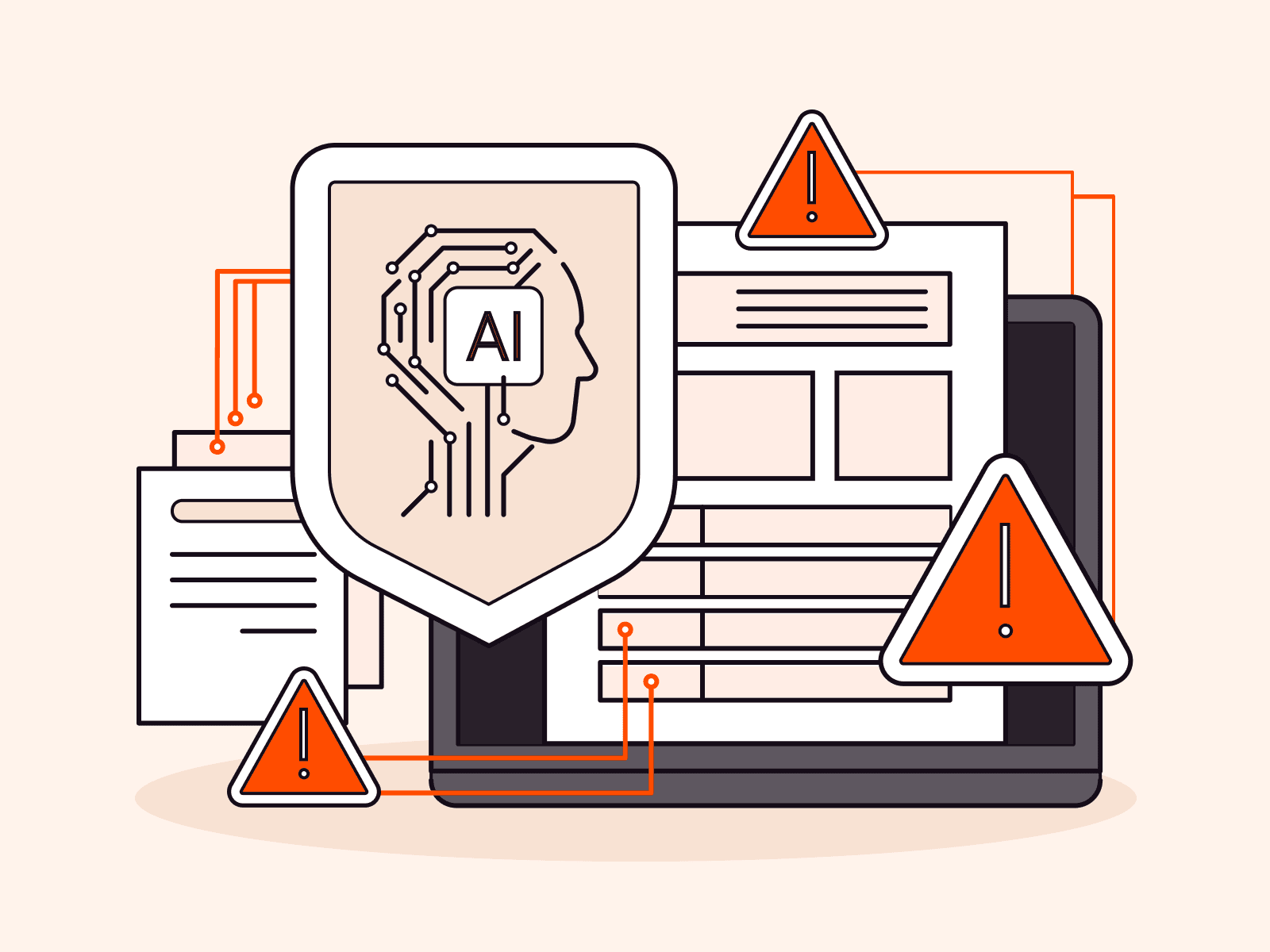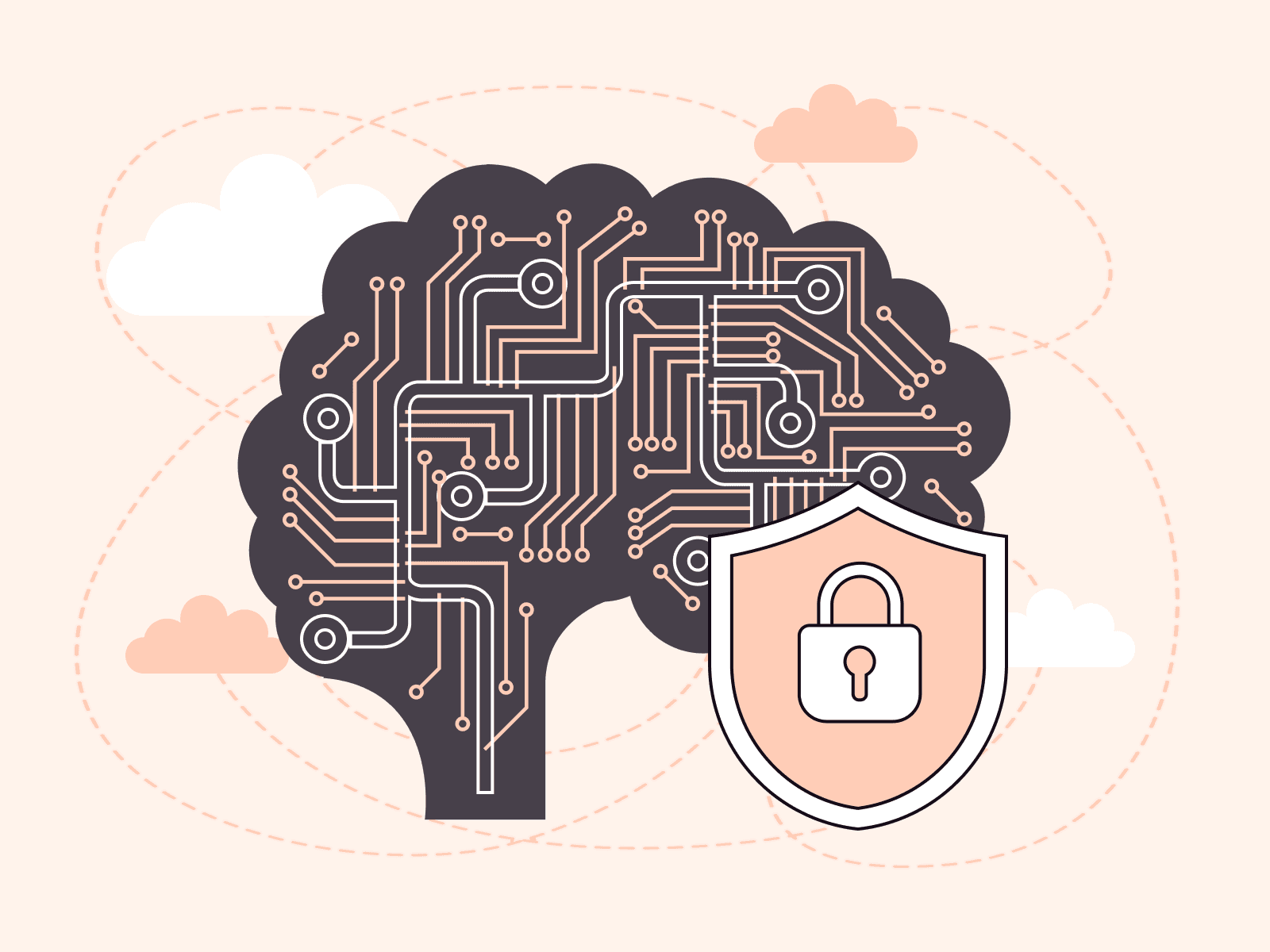Artificial intelligence (AI) is revolutionizing the way businesses communicate with their customers. From engaging customers with AI-powered chatbots to offering 24/7 support through intelligent systems, AI is more than a technological advancement; it’s now considered an essential part of modern customer service. This article will explore the multifaceted impact of AI in customer service, detailing its applications, benefits, and its vital role in enhancing customer loyalty and operational efficiency, all of which help businesses to stand out in today’s market.
What Is AI for Customer Service?
AI for customer service, or AI customer experience (CX,) enhances how businesses provide customer service by making technology-based interactions efficient by increasing self-service options and decreasing the need for human agents, even for complex tasks. Ultimately, the goal is to enhance key performance indicators (KPIs) like customer loyalty and engagement.
Examples of AI in customer service include:
- Self-service food-ordering kiosks
- Business call screening tools
- Product recommendation chatbots
- Predictive analytics for customer service agents
- Enhanced knowledge base search results
These artificial intelligence systems understand unstructured information in a way similar to humans: They learn from interactions with customers and apply this knowledge to future engagements. They can offer a level of personalization that feels like natural human communication. By performing repetitive customer service tasks and providing quick answers to simple inquiries, AI frees up human customer service agents to focus on the most complex or highly individualized issues.
How AI in Customer Service Works
AI customer service is a three-stage process: insights, customer interaction, and automation. To see how these interconnect, let’s consider the example of an e-commerce retailer, which we’ll call “RetailX.”
Stage One: Insights for Data-Driven Decisions

The first stage involves using automated algorithms to collect and interpret data from various relevant digital sources. This shows broad trends in customer behavior, enabling organizations to decide how AI customer service can be of use.
At RetailX, the AI system gathers data from various customer interactions, including website visits, online purchases, cookie records, and customer reviews. RetailX then uses AI algorithms to analyze customer activity, like the time spent on different product pages and reviews given for past purchases, to make sense of the data and generate a holistic customer profile. Natural language processing (NLP) facilitates the analysis of customer reviews and feedback, generating a detailed understanding of what customers think and want.
Imagine a RetailX customer who frequently browses athletic gear. AI detects this pattern and starts to predict what products might interest them in the future, setting the stage for targeted customer service interactions.
Stage Two: Enhancing Customer Interaction
Customer interaction is at the heart of a memorable customer experience. The second stage of the AI in customer service flow focuses on using personalized insights to create an individualized and engaging customer experience.
In e-commerce, AI-driven systems analyze factors about individual user behavior, such as the time spent on a page or interactions with item types, all in real time. A nuanced, instantaneous analysis lets the AI offer suggestions that are highly tailored to what you’re likely to want at that moment. The result is an engaging and effective shopping experience, increasing the chances of you making a purchase.
For example, when our athletic gear enthusiast logs back into RetailX, AI algorithms populate the homepage with sports equipment and clothing, based on the specific sporting interests and brands in which our individual has already shown interest. The personalization isn’t limited to the website; it extends to the mobile app, social media, and email marketing as well, suggesting products aligned with the customer’s historical data while providing a cohesive customer experience across multiple channels. RetailX continuously updates these recommendations based on new data as it’s interpreted, keeping the experience fresh and relevant.
RetailX leverages AI in Internet of Things (IoT) devices like smart home devices, to keep the customer experience cohesive and personalized across multiple touchpoints, For instance, if our athletic gear enthusiast uses a smart speaker that’s synced with RetailX, they could receive audible recommendations for new running shoes or hydration gear based on their recent activity data.
Stage Three: The Power of Automation

This leads us to automation, wherein AI takes over routine tasks based on the information it gathered in stages one and two, making operations more efficient and freeing human agents to tackle nuanced and complicated issues. Automation encompasses multiple customer service tasks that AI can perform.
Take the example of our RetailX customer finally ready to purchase a pair of running shoes. The moment they click “Buy,” AI springs into action. It conducts an instantaneous inventory check and manages payment processing, minimizing delays. If the customer has a question, AI customer service bots equipped with natural language processing can resolve straightforward queries, like order status or return policies. For complex questions that require emotional intelligence, raise truly novel issues, or require nuanced understanding, the system reroutes the issue to human customer service agents.
This automation not only expedites the transaction but also generates new data as interactions unfold. This fresh data is channeled back into the first stage, continually refining the customer experience.
AI in Customer Service Applications
Let’s look at exactly what roles AI can support or take over in the realm of customer service.
Chatbots and 24/7 Support for Customer Retention
AI chatbots make it economically feasible for smaller companies to offer round-the-clock assistance. They use natural language processing to understand and respond to customer queries in real time, contributing to higher customer retention rates. While it’s true that 24/7 support existed before AI, the technology makes it more efficient, cost-effective, and scalable.
For instance, if you operate an online travel agency, you could deploy a customer service chatbot that provides instant updates on flight delays or cancellations. By offering timely and accurate information of this kind, your agency builds trust and creates a valued service—qualities essential for retaining customers for future interactions.
Personalized Customer Experience
AI empowers brands to offer personalized experiences to their customers. Algorithms analyze past user behavior and interactions to generate tailored recommendations. This level of customization increases engagement and fosters long-term relationships.
A movie streaming platform could use AI to take the concept of personalized film suggestions to the next level, adapting to your changing preferences. Say you started kayaking as a new hobby. AI could discover this through your activity across online platforms, and might recommend a documentary movie about the sport. This elevates your movie-watching experience from customized to truly individualized, promoting continued subscription renewals.
Data-Driven Surveys for Dynamic Feedback
Traditional surveys have been a cornerstone in gathering consumer insights, but AI-powered surveys offer a nuanced approach. They adjust questions in real time based on a respondent’s prior answers. This iterative process ensures that each question adds a layer of depth, making the data collected highly specific.
For instance, if you frequently eat at a certain restaurant chain and consistently choose vegetarian options, AI would note your preference. The restaurant could customize a survey sent to you to ask questions only about their vegetarian offerings, generating focused and actionable data and creating a highly relevant survey, thus improving survey engagement and completion rates.
Sales and Marketing Through AI-Enhanced Conversion
Predictive analytics in sales and marketing are nothing new. However, AI continuously analyzes user behavior, streamlining the journey from browsing to purchase, without altering the essence of the sales funnel.
Imagine an e-commerce scenario where you add a smartphone to your cart. The AI system could suggest adding a case with an image of your favorite band, a complementary item that you’re likely to need with a personal preference element, making the entire process more targeted and efficient.
Facial Recognition for Security and Personalization
While conventional facial recognition methods rely on static algorithms, AI-driven facial recognition adapts to variables like lighting, angle, and even aging, enhancing its accuracy over time. This continuous learning capacity ensures that security remains stringent without the need for frequent manual updates. It serves as an additional layer of authentication, improving existing security measures while adding a touch of personalization to the customer journey.
In a banking scenario, ATMs with AI-augmented facial recognition could not only verify customer identity with higher accuracy but also adapt to changes like facial hair or glasses. Upon successful authentication, the system could offer a personalized dashboard tailored to the customer’s past behavior and preferences, improving user engagement.
Virtual Assistants Beyond Hands-Free Support
Voice-activated virtual assistants take the monotony out of routine tasks. They handle activities like appointment scheduling with speed, relieving human customer service representatives of the most basic tasks.
Take healthcare appointment scheduling as an example. An AI virtual assistant understands voice commands, enabling patients to effortlessly book, reschedule, or cancel their appointments. Humans can perform all these tasks, but by handing them over to AI, representatives are free to engage in face-to-face interactions in the healthcare setting without a phone continuously ringing in the background.
Content Optimization for Audience Resonance
AI brings precision to content creation and optimization. Algorithms sift through customer interactions to tailor content that speaks directly to an individual consumer’s needs and preferences.
An e-commerce platform could use these algorithms to automatically translate product descriptions into multiple languages. This tailors the customer’s shopping experience to their linguistic preferences, making the platform more accessible globally. It could also suggest blog posts that refer to product lines in which the individual customer is likely to be interested, based on their broader online activity.
Real-Time Feedback Analysis
Customer feedback is integral to business improvement. AI analyzes data from various channels in real time, pinpointing areas that warrant immediate attention—a task that humans can also perform, but less rapidly and less efficiently than AI.
Consider a hotel chain that applies AI algorithms to review customer feedback on room amenities. If multiple guests complain about the Wi-Fi quality, the hotel can prioritize this issue and determine whether it’s a general problem or relevant to specific rooms only, ensuring that future guests have a better experience.
Overcoming Challenges and Risks of AI in Customer Service
AI in customer service is an intricate field with distinct challenges. The information required for AI to function optimally is often scattered across various channels, making unification a significant hurdle. Some companies are also hesitant about AI’s cost and potential return on investment, while others struggle with misconceptions about its capabilities. The line between using artificial intelligence for positive customer impact and respecting privacy and data risks must be carefully drawn, with the technology fine-tuned for each specific application.
These are serious challenges, but there are ways to confront them:
- Address potential inaccuracies and misinformation: Reducing errors in communication is vital, but the ultimate goal is to enhance user satisfaction by creating experiences that resonate with human instincts and expectations. This is done by:
- Being vigilant about errors: Potential inaccuracies, if left unaddressed, can erode trust and damage the brand’s image. Implementing timely corrections is not just a technical necessity but a strategic tool to preserve the integrity of the information. Ensuring that the content is accurate reflects the brand’s commitment to quality and fosters a relationship of trust with the audience.
- Training AI systems: By using large and varied datasets of both text and code, AI can be taught to converse and engage with humans in ways that feel natural. This focused training is a means to bridge the gap between artificial intelligence and human connection.
- Ensure human oversight for AI: Balancing the capabilities of AI with human understanding is essential to maintaining integrity and empathy in automated interactions. This is achieved by:
- Combining AI with human insight: While AI provides the efficiency and speed of automation, human involvement remains important for ensuring accuracy and authenticity. For example, the integration of AI customer service chatbots with human customer support staff results in a system that is not only efficient but also personalized, compassionate and responsive.
- Transparency about data usage: Being open about data usage builds trust and also forms a vital part of a broader governance strategy. Laying out how information will be handled, protected, and leveraged assures stakeholders that their privacy is respected, promoting a relationship of trust and alignment with ethical business practices.
- Support for employee growth: Integrating AI into business operations can impact staff roles. By investing in training and new career paths, companies demonstrate their focus on employee well-being. This proactive approach also portrays the organization as resilient and innovative.
Conclusion
The integration of artificial intelligence in customer service opens new horizons for businesses to create exceptional customer experiences. As we embrace this transformative technology, it is crucial to consider the challenges and ensure human oversight for AI-generated content. Looking ahead, companies that strategically adopt AI in customer service will stand out as technology-savvy innovators, creating breakthrough experiences that strengthen customer-brand connections.
Ready to take your customer service to the next level? Explore Gcore’s AI solutions and revolutionize your customer experience! Our AI Infrastructure enables you to build, train, and deploy machine learning models for any use case. With cutting-edge frameworks and support for AI hardware, you can create personalized interactions, gain predictive insights, and boost customer satisfaction.
Find out which solution works best for your AI requirements.
Related articles
Subscribe to our newsletter
Get the latest industry trends, exclusive insights, and Gcore updates delivered straight to your inbox.






